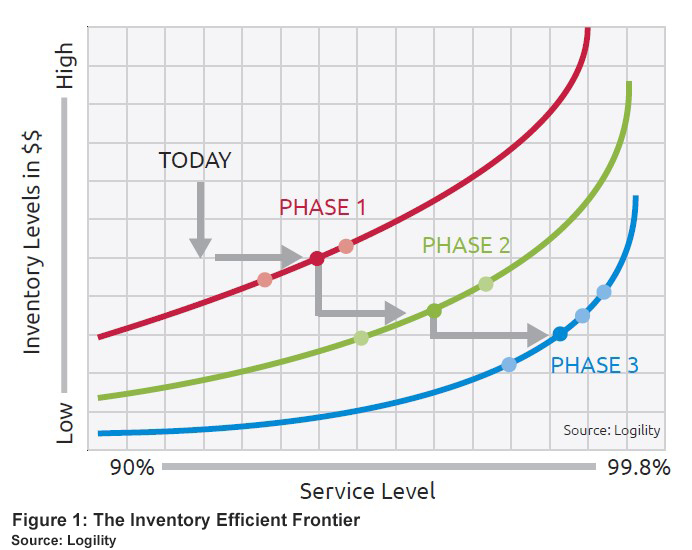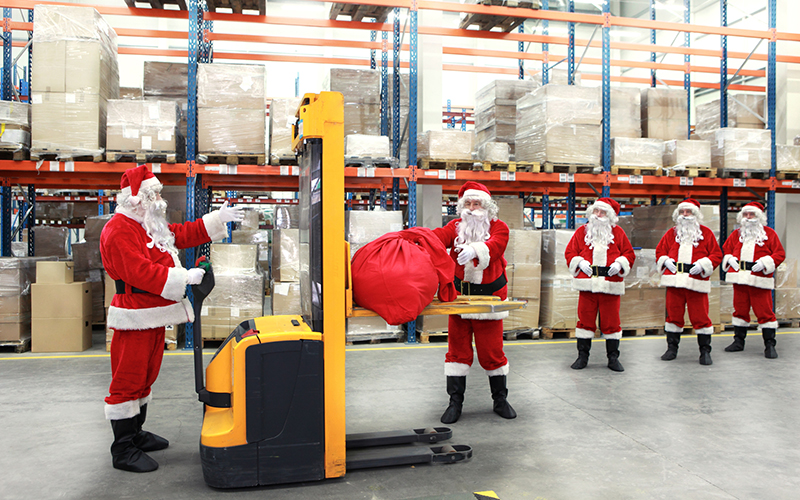Changing the Status Quo to Stay Ahead of the Amazon Effect

Supply chains are growing more complex as product proliferation and customer service expectations rise driven in part by the “Amazons” of the world.
Planning teams face multiple dilemmas including promoting and supporting top line growth, containing cost, efficiently managing on-going operations and finding new ways to drive innovation.
To complicate matters, supply chains are growing more complex as product proliferation and customer service expectations rise driven in part by the “Amazons” of the world.
Increasing complexity due to larger product portfolios drives demand volatility, more distribution channels and wider-spread supply chain networks. Traditionally, complexity required increasing inventory levels to buffer against the unknown, which in turn brought about more scrutiny from senior management as working capital increased.
The answer, while simple to state, seems to allude many organizations: hold the right amount of inventory in the right locations to improve cash flow and provide better responsiveness to dynamic customer demand. Industry research and surveys point to Inventory Optimization (IO) as a key capability to combat these growing supply chain stresses.
A form of prescriptive analytics, IO determines where and how much inventory to hold to meet a designated service level while complying with specific inventory policies. Through sophisticated algorithms, IO makes stocking recommendations to satisfy demand with the least amount of inventory. Inventory Optimization can have a huge financial impact by minimizing inventory and freeing up working capital while guaranteeing the right stock is on hand, when and where needed.
Change the Status Quo through Multi-echelon Inventory Optimization
Multi-echelon Inventory Optimization (MEIO) goes a step further to simultaneously optimize stock locations and amounts across all inventory types in a supply chain network. Through advanced mathematical algorithms, MEIO models inventory flows through every interdependent stage and location of a supply chain to create an optimal configuration of internal and external inventory buffers to handle demand and supply uncertainty. MEIO can model component/raw, work-in-process (WIP) and finished goods inventory to ensure the right amount of each is stocked in the right locations enabling powerful postponement strategies.
MEIO’s rapid “what-if” scenario analysis to modify stock buffers (lowering some, raising others) and revamped policies and targets around the supply chain has shown in the real world to reduce inventory 10% to 30%, freeing millions (and in some cases, billions) in working capital that was trapped in excess stock and carrying costs.
Multi-echelon Inventory Optimization, at its simplest form, enables the trade-off between service level and inventory cost modeled across the efficient frontier (see Figure 1). The Inventory Efficient Frontier shows that, for any status quo, it will always cost more to achieve higher service levels. However, through MEIO initiatives we can change the status quo and create a series of new curves that deliver a desired service level at less cost than the former state allowed.

MEIO’s Impact on the Supply Chain
MEIO modeling compares actual demand to forecast, and actual receipt of goods to the plan for each SKU. MEIO models identifies forecast accuracy and safety stock issues while factoring historical forecast accuracy into the equation enabling predictive service level calculations. This fact-based approach to inventory targets allows you to right-size inventory by SKU and location.
MEIO strategic inventory modeling answers more difficult questions, i.e. where to make or stock products or the impact of distribution or manufacturing facility closures and openings. Strategic inventory modeling can provide quick, side-by-side scenario analysis to help make the right decisions. MEIO enables timely answers to complex “what-if” questions including impacts of channel changes and stocking policies across a complex and volatile omni-channel distribution network.
A Proven Three Step Approach to MEIO:
A simple three-step approach has been proven effective to achieving a successful MEIO initiative:
1. Assess your organization’s capabilities from the perspectives listed below to understand your current state and to lay the foundation for a solid business case that delivers real-world results:
- Inventory performance
- Business process and inventory management expertise
- Technology and organizational readines
2. Create a future state MEIO capability—process, technology, organization—that provides your supply chain team with a roadmap to success.
3. Drive fundamental strategic changes that create greater resiliency and agility throughout the supply chain and establish a cycle of continuous improvement.
Time for Change
The benefits of Multi-echelon Inventory Optimization (MEIO) are well established by hundreds of companies of all sizes and in many industries. Leading organizations have shown that right-sizing inventory buffers and restructuring where and in what form inventory is held can drive powerful financial benefits. Inventory Optimization provides a knowledge platform for better decision-making and enables organizations to use inventory as a lever for balancing supply and demand.
Amazon and other large e-retailers appeal to consumers on product offering, price and speed of delivery. They are able to effectively compete in these areas due to economies of scale that lower operating costs. To compete against the “Amazons” of the world, companies must find ways to simultaneously lower costs and improve customer service. MEIO is a modern weapon that does just that by enabling companies to selectively pick where to engage. MEIO allows companies to optimize inventory for the markets they want the battle to be fought in, for select customers, and select products.
Related: Planning and Optimizing the Christmas Express Supply Chain 
Related White Paper
The Inventory Optimization Handbook
This e-book explores Inventory Optimization and Multi-echelon Inventory Optimization strategies to help minimize costs while meeting customer service requirements, and provides examples of how to build these capabilities at your company. Download Now!
Article Topics
Logility News & Resources
Logility makes entrance into supply chain-focused AI, with acquisition of Garvis Logility Acquires Generative AI Supply Chain Planning Firm Garvis Supply chain software platforms help to level the playing field Logility to acquire supply chain network optimization vendor Starboard Solutions Logility partners with Körber to expand capabilities How Does IKEA’s Inventory Management Supply Chain Strategy Really Work? This is Not Your Father’s Inventory Optimization More LogilityLatest in Supply Chain
Microsoft Unveils New AI Innovations For Warehouses Let’s Spend Five Minutes Talking About ... Malaysia Baltimore Bridge Collapse: Impact on Freight Navigating TIm Cook Says Apple Plans to Increase Investments in Vietnam Amazon Logistics’ Growth Shakes Up Shipping Industry in 2023 Spotlight Startup: Cart.com is Reimagining Logistics Walmart and Swisslog Expand Partnership with New Texas Facility More Supply Chain














